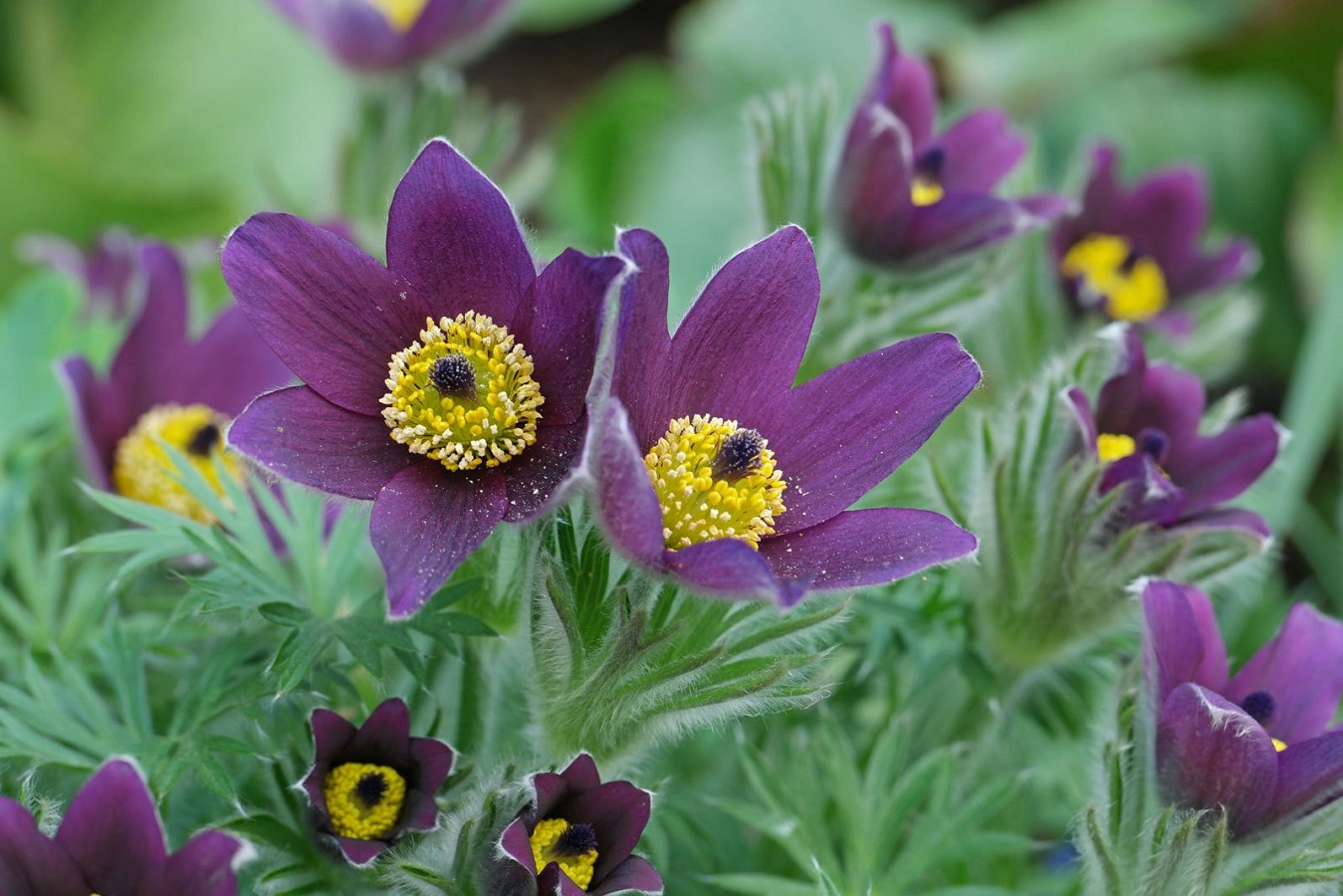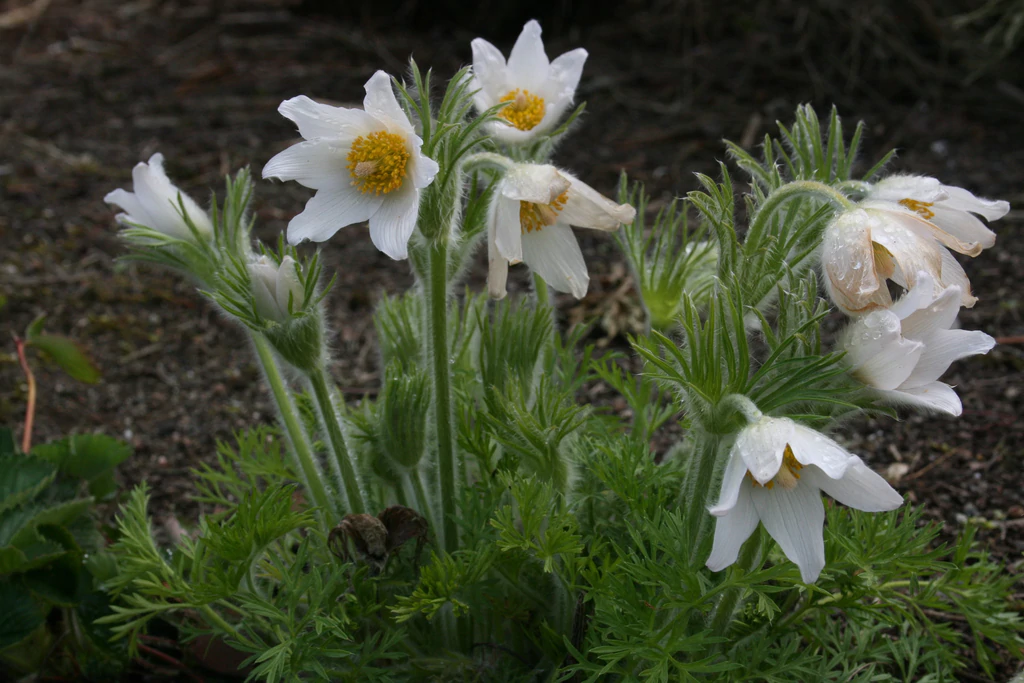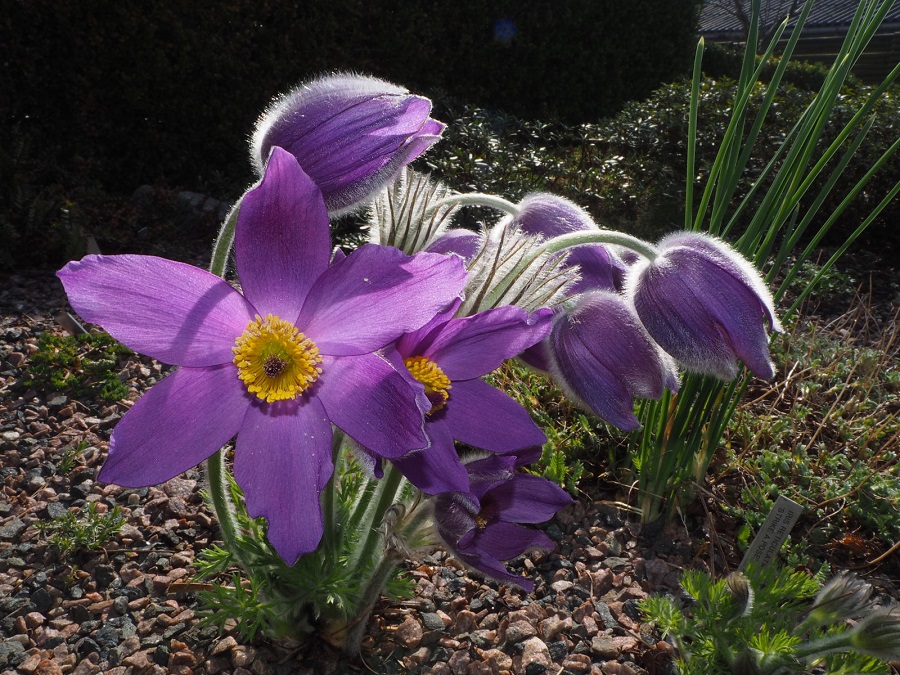Pasque Flower - Characteristics, Varieties, Cultivation and Diseases
Pasque flower is an ornamental plant, often cultivated as a part of flower arrangements in gardens and parks. It's a protected species in some countries, e.g., in Poland. The plant is becoming a rare occurrence in the natural habitat. But it doesn't mean that pasqueflower is not popular. On the contrary! It appears commonly in gardens. Check how to take care of this plant and learn about it needs.

Pasque flower – what kind of plant is it?
Pasque flower, also known as Pulsatilla is a plant included in the group of perennials. It occurs naturally across the entire Europe. In some parts, though, it so rare that it’s a protected species. Because there are different varieties of this plant - pasqueflower is a commonly picked species for home gardens.
Pasque flower is a relatively small plant which begins its growth during the first spring months. With the first stage of growth, only leaves appear – they are silver and covered with hair. Colorful flowers show up later. A fully grown pulsatilla forms a small cluster of leaves and flowers.

The most popular varieties of pasque flower
Pasque flower is a relatively popular plant, but some varieties are more common than others. Three cultivars are particularly liked among gardeners. They are:
- Rubra – the plant grows up to 40-50 centimeters tall, its intense red flowers are quite characteristic, plus the plant can bloom again between September and October, in addition to the standard blooming season,
- Alba – it grows maximally 20-40 centimeters tall and develops relatively large white flowers,
- Pink Shades – it can reach from 20 to 50 centimeters in height, and has large pink flowers.

Does pasque flower need any special growth conditions?
Pasque flower is characterized by high durability, which makes it a perfect plant for any gardener – even a beginner. It’s not a demanding plant and grows perfectly well in any conditions.
If you decided to grow pasqueflowers in your garden, make sure to provide the best possible conditions for their proper development. The plant prefers permeable and loose soils. Sandy soil is a good option as well. Calcium-rich soils with alkaline pH are perfect, too.
When picking a location for a pasque flower, pick a bright and sunny spot. That’s where the plant will grow and bloom best. If you have no such a possibility, half shade will also do.
Is pasque flower poisonous?
Pulsatilla alpina is a perfect addition to any flower bed. But if you decide to add this plant to your garden collection, keep in mind that it’s a toxic plant. It’s not poisonous, but contact with it might be dangerous – especially for small children and pets.
Pasque flower sap might cause the following reactions:
- a feeling of intoxication,
- nausea,
- central nervous system paralysis.

Pasque flower – planting and cultivation
Pasque flowers don’t tolerate dark and damp places. But they can perfectly endure dry months. Because of the circumstances of its natural habitat, the plant is frost resistant, and can survive low temperatures without any additional protection.
When planting the seeds, place them in sandy soil rich in humus and of low moisture levels. The second half of July is the best time for planting pasque flower seeds – that’s when the warmest days of summer have passed and temperatures become more moderate.
Alpine pasque flower – watering
Pasque flower grows perfectly well in dry conditions, in fact, it doesn’t tolerate too moist soils. For this reason, one should limit watering the plant to a minimum. If precipitation occurs on a weekly basis, abstain from watering the flowerbeds for a while.
You can water the plant more intensely only during dry spells accompanied by high temperatures.

How to propagate pasque flowers?
Pasque flower can be propagated in two ways. Generative propagation is one of them. It involves collecting seeds after the plant stops blooming. Planted seeds grow after half a year. If the plant grows after a month from seeding, there is a big chance it will survive winter, regrow in spring and bloom. You can cover the planted seeds before winter as a preventative measure, to support their frost resistant properties.
Another method is for experienced gardeners only. Vegetative method is quite difficult. The greatest success can be achieved when using few years old plants. The method involves dividing the roots of the pasque flower. We recommend doing it in August. Divided flowers are replanted in a new location.
Pasque flower care – potential diseases
Pasqueflower is an exceptionally resilient plant, unlikely to be threatened by any diseases, if cultivated properly. Only if the plant is treated improperly, it might develop fungal diseases. If it happens, use the right store-bought fungicide and change the cultivation style.
Observation is a key element of growing pasque flowers. Some symptoms require an almost immediate reaction. Grey mold is a good example. If an appropriate product is not used, the plant withers and eventually dies.
Are pasque flowers vulnerable to pests?
Pasque flowers are resistant to most pests. It’s a result of its toxicity. The only pests that can be sometimes observed on this plant are aphids – but they can be easily eliminated. Apart from this, you don’t have to worry about other dangerous insects.

📍 What are the colors of pasque flowers?
Pasque flowers are mostly associated with purple. Most varieties of this species bloom in this color. Some pasqueflower cultivars bloom in other colors such as red and white.
📍 What does a pasque flower look like?
Pasque flower is a plant which grows up to 20-30 centimeters tall. Young plants are covered with tiny hairs. The flowers are full and have different colors – purple pasque flowers are the most popular varieties.
📍 When do pasque flowers bloom?
Pasque flowers begin blooming at the beginning of March. Its flowers last until the beginning of May. The species begins blooming earlier if growing in warmer climates. In cold regions, pasque flowers bloom closer to May.
📍 When to plant pasque flower seeds?
Summer is the best time for seeding pasque flowers. It's typically done mid-July. This way, heat waves won't damage the seeds.
Featured articles




